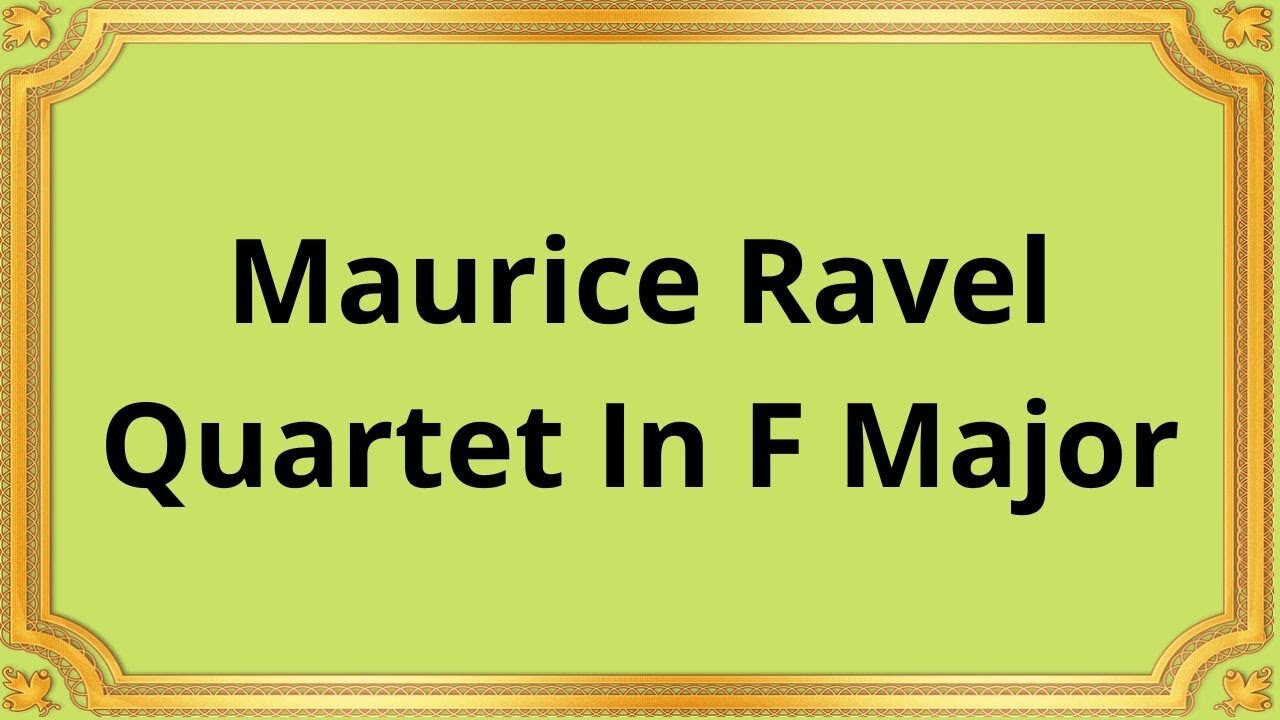Premium Only Content

Maurice Ravel Quartet In F Major
#ClassicalMusic #MusicalComposition #MauriceRavel #QuartetInFMajor #ChamberMusic #Impressionism #FrenchComposer #20thCentury #MusicalStructure #TonalColors #Virtuosity #HarmonicLanguage
Publication date 1948
Budapest String Quartet
Maurice Ravel, a prominent French composer of the 20th century, left an indelible mark on classical music with his innovative compositions. Among his notable works is the Quartet in F Major, a chamber music masterpiece that showcases Ravel's musical genius.
Ravel composed the Quartet in F Major in 1902, during a time when he was emerging as one of the leading figures of French Impressionism in music. This piece represents a departure from traditional quartet forms, as Ravel seamlessly blends tonal colors, harmonic language, and virtuosic writing to create a unique musical experience.
The Quartet in F Major follows the traditional four-movement structure of a classical quartet: Allegro moderato, Assez vif - Très rythmé, Très lent, and Vif et agité. Ravel's ability to craft a cohesive musical narrative within each movement demonstrates his mastery of musical structure and form.
Ravel's Quartet in F Major is characterized by its impressionistic qualities, drawing inspiration from the visual arts movement of the same name. The composition showcases Ravel's meticulous attention to tonal colors, as he utilizes the unique timbres of each instrument to create a lush and evocative sonic palette. The interplay between the strings creates a delicate and shimmering texture, reminiscent of the impressionist painters' brushstrokes.
The Quartet in F Major demands virtuosity and technical brilliance from the performers. Ravel's intricate writing for each instrument showcases his deep understanding of their capabilities and challenges the musicians to showcase their skill and precision. The composition's rhythmic complexities and rapid passages add to its overall brilliance.
Maurice Ravel's Quartet in F Major holds a significant place within his repertoire and the realm of classical music. It represents a milestone in Ravel's career, showcasing his unique compositional style and his ability to push the boundaries of traditional forms. The quartet's enduring popularity and frequent performances by renowned chamber ensembles ensure its continued appreciation by musicians and audiences worldwide.
Conclusion:
Maurice Ravel's Quartet in F Major stands as a testament to his musical brilliance and his contribution to the world of classical music. Through its impressionistic qualities, meticulous attention to tonal colors, and virtuosic writing, this composition offers a captivating and immersive experience for both performers and listeners. It represents a significant milestone in Ravel's career and serves as a reminder of his lasting legacy as a trailblazing composer of the 20th century.
You have the opportunity to support the channel:
https://destream.net/live/RadSiarAl/donate
https://www.buymeacoffee.com/6355radsiaral
-
 9:34
9:34
Dr David Jockers
13 hours ago $0.09 earnedThe Shocking Truth About Butter
3.18K1 -
 9:05
9:05
Bearing
20 hours agoJaguar's Woke New Ad is SHOCKINGLY Bad 😬
3.28K59 -
 7:55
7:55
Chris From The 740
12 hours ago $0.01 earnedWill The AK Project Function - Let's Head To The Range And Find Out
1.3K7 -
 2:39
2:39
BIG NEM
8 hours agoHygiene HORROR: The "Yurt Incident"
1.17K1 -
 3:19:21
3:19:21
Price of Reason
12 hours agoHollywood Celebrities FLEE the US After Trump Win! Wicked Movie Review! Gaming Journos MAD at Elon!
53.1K21 -
 3:55:45
3:55:45
Alex Zedra
7 hours agoLIVE! Last Map on The Escape: SCARY GAME.
60.7K3 -
 1:14:07
1:14:07
Glenn Greenwald
12 hours agoComedian Dave Smith On Trump's Picks, Israel, Ukraine, and More | SYSTEM UPDATE #370
160K208 -
 1:09:07
1:09:07
Donald Trump Jr.
14 hours agoBreaking News on Latest Cabinet Picks, Plus Behind the Scenes at SpaceX & Darren Beattie Joins | TRIGGERED Ep.193
199K636 -
 1:42:43
1:42:43
Roseanne Barr
10 hours ago $60.70 earnedGod Won, F*ck You | The Roseanne Barr Podcast #75
85.7K185 -
 2:08:38
2:08:38
Slightly Offensive
11 hours ago $34.23 earnedDEEP STATE WINS?! Matt Gaetz OUSTED as AG & Russia ESCALATES War | Guest: The Lectern Guy
83.2K43